Centre for Policy Development's Blog, page 29
October 8, 2018
Population Policy | ANU-CPD POLICY DIALOGUE | September 2018
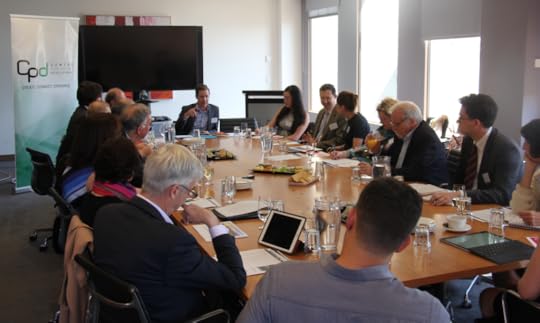
Australia’s population has recently hit the 25 million mark, a milestone reached decades earlier than expected. In Victoria, the City of Wyndham had the second largest percentage increase in population of all Local Government Areas in Victoria, adding over 62,500 people in 5 years. Some people are conflicted about whether Australia’s population should continue to grow at all. There are tensions between the various dimensions of ‘sustainability’, significant implications for economic growth and concerns around community cohesion and wellbeing. A forward-looking integrated population policy might offer a way to be prepared to respond to the current and future needs of Australians. So, what would a good population policy look like and how can Australia turn demographic challenges into opportunities?
On 27 September 2018 CPD and ANU hosted leaders from government, business, civil society and academia to consider some answers to these questions.
This event was hosted by ANU Chancellor and former Foreign Minister, the Hon Gareth Evans AC QC and was moderated by CPD CEO Travers McLeod. Our two experienced speakers on this occasion were:
Professor Peter McDonald AM (Emeritus Professor of Demography in the Crawford School of Public Policy.); and
Kelly Grigsby (Chief Executive Officer of Wyndham City Council).
Peter McDonald opened the discussion with an overview of recent migration trends. He explored an approach to international migration that is responsive to short- and medium-term labour demand – while optimising the impact of immigration on population ageing. He also touched on the idea of the regional settlement of migrants arguing that, ironically, reducing international migration to the large cities would make it harder for the regions (including Adelaide and Hobart) to maintain their populations. Peter also shared some insights into the new Population Minister Alan Tudge’s priorities.
Kelly Grigsby built on these remarks by providing the perspective of one of the fastest growing councils of Australia, Wyndham City Council. She spoke about the policy shift the Council would like to see and the policy framework they are working on. She emphasised how Australia’s fast-growing outer suburbs play a vital role in supporting capital cities and regional Australia since they provide housing for much of the workforce that drives CBD economies and growing economic activity to support national productivity. She also touched on game-changing activities on local government level around job creation and gave a sense of what it can mean for a Council to become a master of their own destiny.
Much of the following group discussion focused on how high population growth will affect infrastructure needs, education needs and health needs, considering policy responses to increasing commute times, over-crowded public transport, school shortages and an undersupply of affordable housing.
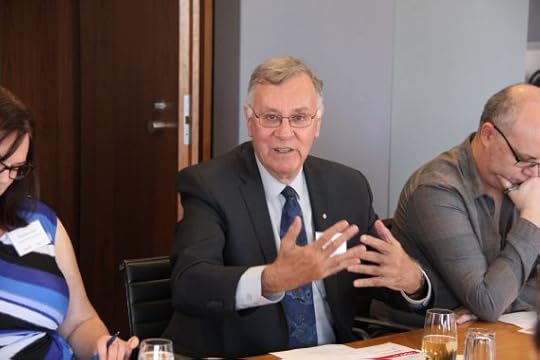
The opening remarks were followed by a wide-ranging discussion with a diverse and expert audience. Participants included: Anthea Hancocks (CEO, Scanlon Foundation), Abigail Lewis (Research Associate, Per Capita), Béatrice Derody (Senior Research Officer, Demography, Department of Environment, Land, Water and Planning, Victoria), Ben Davison (Chief of Staff, ACTU), Cathie Close (Director, Victorian Department of Treasury and Finance), David Williams (CEO, Planning Institute of Australia), Fotis Kapetopoulos (Executive Officere guests, Ethnic Communities’Council of Victoria), Gareth Evans (Chancellor, ANU), Joel Farrell (Manager Organisational Performance & Engagement, Hume City Council), Kathryn Arndt (CEO, Victorian Local Governance Association), Kelly Grigsby (CEO, City Of Wyndham), Michel Masson (CEO, Infrastructure Victoria), Phil Ruthven (Founder and Director, IBIS World), Professor Peter McDonald AM (Emeritus Professor of Demography, Crawford School of Public Policy), Rob Adams (Director City Design, City of Melbourne), Sara Harbidge (Executive Director, Suburban Development, Department of Environment, Land, Water and Planning, Victoria), Terry Garwood (Deputy Secretary, Department of Environment, Land, Water and Planning), Travers McLeod (CEO, The Centre for Policy Development), Bronwen Clark (Executive Officer, National Growth Areas Alliance).
CPD would like to thank Gareth Evans and the team at ANU House for hosting the event, and all the participants who contributed to another engaging ANU-CPD Policy Dialogue.
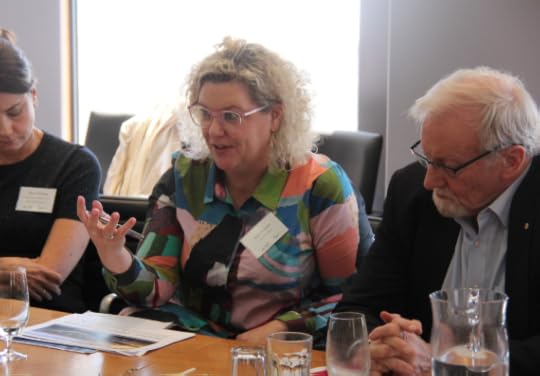
The post Population Policy | ANU-CPD POLICY DIALOGUE | September 2018 appeared first on Centre for Policy Development.
July 22, 2018
Time for an Australian sustainable finance taskforce
Published in The Sydney Morning Herald on 22 July 2018.
[image error]ASIC commissioner John Price.Photo: Jeremy Piper
ASIC commissioner John Price left a Sydney audience in no room for doubt last month when he confirmed company directors risked personal liability if they didn’t consider climate change risks.
But ASIC’s message was about much more than climate change. Commissioner Price spoke of a fundamental change in how companies are evaluated and for them to conduct their business in a socially responsible manner. He confirmed ASIC is part of international discussions about reporting of environmental and sustainability risks and is closely monitoring international developments like the European Commission’s Action Plan on Financing Sustainable Growth.
Make no mistake, the sustainable finance agenda has taken off around the world and Australia will miss out if we don’t move fast. The UN Environment Inquiry has found some 267 sustainable finance measures in 53 jurisdictions.
Take Britain, for example. Since last October, Britain’s Conservative government has finalised a Clean Growth Strategy, an Industrial Strategy, a 25 Year Environment Plan and launched a new Green Finance Institute.
The Bank of England has released a paper on climate change and the macroeconomy, broadened its prudential supervision of climate risk to include banks and formed a network of central bankers for Greening the Financial System.
Let’s be clear about what Britain’s Conservative government is doing.
It has nurtured winners, via the Industrial Strategy. It has shown its colours (green over brown). And it has picked fuel sources. The Clean Growth Strategy aims to “phase out the use of unabated coal to produce electricity by 2025”. It hailed April 21, 2017 as the first day since 1882 that the UK didn’t use any coal for 24 hours.
Europe’s agenda is more ambitious. The European High-Level Expert Panel on Sustainable Financeand the European Commission’s Sustainable Finance Action Plan seek to steer capital towards sustainable investments and protect the financial system from sustainability risks like climate change.
Next on the EC’s agenda is updating responsibilities for directors and fiduciaries, new prudential and reporting requirements and better transparency about so-called “sustainable” or “green” products for consumers.
This last move is key given alleged greenwashing of products and financial markets, and is bolstered by draft EU proposals to classify what “sustainable” and “green” actually mean.
Australia has lagged behind global efforts on climate change and sustainable finance. Our regulators are now on the front foot after decisive interventions by APRA and ASIC. The Council of Financial Regulators has formed a climate risk working group.
But regulatory interventions and leadership from a patchwork of companies won’t be enough. To maximise the opportunities for employment and growth as the world transitions to a greener economy, Australia needs a coherent, national response.
The Australian government has a huge opportunity to work with industry and civil society to turbocharge a sustainable finance agenda at home, and connect it to what is happening abroad.
They can do this by appointing an Australian Sustainable Finance Taskforce. It could be a hybrid of the UK, EU and Canadian examples, comprising no more than 10 members assisted by a secretariat from the Department of Prime Minister and Cabinet, and be chaired by someone with public and private sector experience, including in international trade and investment.
The taskforce should be asked to report back within 12 months. This would be after the next federal election. Successful initiatives abroad have been apolitical and conceived as joint enterprises between government, regulators, business, academia and civil society.
The taskforce should play close attention to how the sustainable finance classification system is finalised in Europe. International compatibility will be beneficial, and strengthen the chances of an EU-Australia trade deal since all EU trade deals have a chapter on sustainability. The EU-Japan trade deal finalised last week is the first to have a clause on the Paris Climate Agreement.
There was a time when Donald Horne accused Australians of being adaptable but unimaginative, of living “on other people’s ideas”. Truth be told, Australia could do a lot worse than do exactly that right now. Complementary initiatives in the EU, UK, Canada, China, Indonesia, the G20 Sustainable Finance Study Group and the United Nations Environment Program ensure we have well-chiselled ideas that could be repurposed for an Australian sustainable finance agenda.
Travers McLeod is chief executive of the Centre for Policy Development (CPD). Sam Hurley is policy director of the Centre for Policy Development (CPD).
The post Time for an Australian sustainable finance taskforce appeared first on Centre for Policy Development.
July 16, 2018
‘Hubs of concentrated advantage’: selective schools need a rethink
Published in The Sydney Morning Herald on 16 July 2018.
In the debate about selective schools, personal stories and beliefs can drown out evidence, especially when that evidence challenges the status quo. So we hear plenty of anecdotes about the successes of selective school students, but relatively few about the students and schools they leave behind.
Our own stories help to illustrate the selective school system’s polarising impact. Around 25 years ago one of us graduated from a selective school with Year 12 results in the top 1 per cent of the state. The other was a principal of a comprehensive school at a time when the government decided to drop a selective school into the neighbourhood, skewing the enrolments of every school within reach.
Some students benefit from attending a selective school, but new evidence confirms the impacts on the rest of the education system are less positive. Our research, published today by the Centre for Policy Development, shows selective schools have become hubs of concentrated advantage that contribute to growing inequality within the education system.
Selective schools were designed to cater to high achieving students and this is what they do. In 2016 and 2017, almost half (45 per cent) of all Year 12 “distinguished achievers” from NSW government schools came from fully or partially selective schools. This is remarkable given that selective schools comprise only 11 per cent of all government secondary schools in the state.
Yet selective schools were also intended to provide opportunities to the brightest of our students wherever they are found and whatever their family circumstances. Our analysis shows this is not happening.
[image error]In 2016 and 2017, almost half of all Year 12 “distinguished achievers” from NSW government schools came from fully or partially selective schools.Photo: Janie Barrett
Nearly three quarters (73 per cent) of selective school students in 2016 came from the highest quarter of socio-educational advantage. Only 2 per cent of students in fully selective schools came from the lowest quarter. This includes selective schools located in relatively low-income areas such as Penrith and Wollongong.
Socio-educational advantage, as measured on the My School website, includes factors like parental education and occupation. Families of high socio-educational advantage may not always earn the highest incomes, but are well endowed with educational and professional capital.
This concentration of advantage and achievement has a negative impact on other schools. Our research uses Year 12 results and My School data to track the “brain drain” from comprehensive public schools when selective schools are established nearby. Four partially selective schools opened in south-west Sydney in 2010. These schools increased their share of local high achievers, sometimes dramatically, while nearby comprehensive schools, and some Catholic schools, lost many of their high-achieving students. Many also experienced consistent declines in overall enrolment.
All this amounts to a system of institutionalised separation and growing inequality in NSW public schools. The irony is that NSW is also in the forefront of catering for high-achieving students online, via Aurora College. This virtual selective school allows students in regional NSW to stay in their local schools while participating in online units with peers from other schools.
The chances of securing much-needed improvement in student achievement are diminished when we aggregate the most disadvantaged students — whatever their background — in schools which are already struggling. At the other end of the scale, the benefits of aggregating high achievers can be a mixed blessing, if reports of stress-related mental health issues are any guide.
If we are to ensure schools are properly equipped to serve all students — then it’s time to rethink the selective approach.
The NSW government’s gifted education policy review needs to not just review admissions regimes but seriously examine whether selective schools in their current form serve the best interests of all our young people.
We can, and need to, provide an education system where parents of bright children can send them to their local comprehensive public school, confident that their interests and needs will be catered for, together with the interests and needs of all students, regardless of ability.
In turn, a diverse mix of students in our comprehensive public schools strengthens these schools. Not only do they retain their high-achieving students, and families committed to quality education, but they are better able to give all students the invaluable education that comes from learning side by side with peers from all backgrounds and of all ability levels. Gaining an understanding and appreciation of this kind of diversity is one of the greatest gifts that schooling can offer our children and our society.
Dr Christina Ho is a senior lecturer in the Faculty of Arts and Social Sciences at the University of Technology Sydney. Chris Bonnor is a Fellow of the Centre for Policy Development.
The post ‘Hubs of concentrated advantage’: selective schools need a rethink appeared first on Centre for Policy Development.
July 15, 2018
Institutionalised Separation | DISCUSSION PAPER | July 2018

Institutionalised Separation looks at inequity within selective schools and their impact on other schools, focussing on NSW. It presents evidence of dramatic, and deepening, educational inequality.
Selective schools are envisaged as a means for the public education system to cater to high achieving students from all walks of life, regardless of family background. However, My School and other data now reveal that selective schools are all but inaccessible to most students. For example, in NSW:
Selective schools are among the most socio-educationally advantaged schools within their local areas,
with only a few exceptions. Fully selective NSW high schools comprise six of the ten most socio-educationally advantaged secondary schools in the state. The rest are all high-fee private schools.
An average of 73 per cent of selective school students came from the highest quarter of socio-educational advantage in 2016. Only 2 per cent of students in fully selective schools came from the lowest quarter.
Selective schools also appear to create a “brain drain” from non-selective public schools, depriving them of their most capable, highest-achieving students. Selective schools comprise 11% of government schools, yet enrol almost half of the high achievers.
The data suggests the dynamics of our school system — instead of promoting inclusion and equity — are increasingly putting socio-educationally advantaged students in a ‘class of their own’. These trends should concern policymakers, parents and students, and should inform the NSW review of the selective school enrolment processes.
The evidence presented in this paper requires us to reconsider the role of selectivity in our schools. Concentrating achievement and advantage in selective schools has come at a cost for students and schools left behind, and might not be best for students in selective schools either. The time has come to rethink and potentially scale back the segregation of high advantaged, high achieving students. A diverse mix of students in schools strengthens our entire education system. Such diversity is one of the biggest gifts schooling can offer our children and our society. 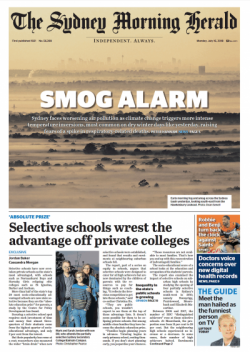
Unless the dynamics presented in this paper are recognised and addressed we won’t improve equity for all. The benefits of improved equity are substantial and widespread. But the chances of achieving much-needed improvement in student achievement is diminished when we aggregate the most disadvantaged students — whatever their background — in schools which are already struggling.
This discussion paper uses data from the My School website, including the Index of Community Socio-Educational Advantage (ICSEA). Rather than focusing on policy implications, it aims to diagnose a problem and prompt debate. While most of the analysis refers to NSW– which hosts 47 of Australia’s 55 selective schools – similar issues are emerging in other states.
This paper is part of CPD’s In a Class of Their Own series on disadvantage in Australia’s schools. The series explores different facets of Australia’s contemporary school system and how it segregates and divides students, families and communities. The first paper in this series, A Creeping Indigenous Separation, focussed on disadvantage related to Indigenous students.
In a Class of Their Own builds on CPD’s reports on the funding and composition of Australia’s schools. Uneven Playing Field (2016) and Losing the Game (2017) revealed a growing divide between advantaged and disadvantaged students, and richer and poorer schools. Our analysis suggested a less equal and more fragmented Australian schooling system.
Key Documents
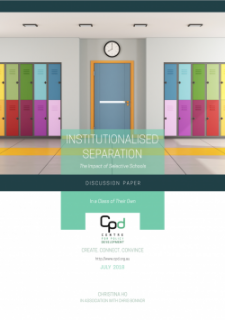
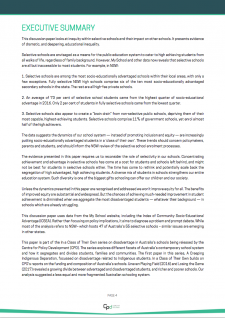
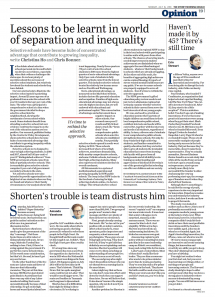
Full discussion paper
Executive Summary
Op-ed
Media coverage
Time to seriously review selective schools, The Sydney Morning Herald, Christina Ho and Chris Bonnor.
‘Absolute prize’: Why selective schools are eclipsing private schools, The Sydney Morning Herald, Jordan Baker.
Key links and related reading
A Creeping Indigenous Separation, CPD Discussion Paper 2018, Chris Bonnor, Christina Ho and Garry Richards
Has Gonski stepped outside the square?, Inside Story, Chris Bonnor
Selective school decisions coming back to haunt us, The Sydney Morning Herald, Christina Ho and Chris Bonnor
Losing The Game: State of our Schools in 2017, CPD Report 2017, Chris Bonnor and Bernie Shepherd
Uneven playing field: the state of Australia’s schools, CPD Report 2016, Chris Bonnor and Bernie Shepherd
The post Institutionalised Separation | DISCUSSION PAPER | July 2018 appeared first on Centre for Policy Development.
June 28, 2018
Trade and Climate Change | ANU-CPD POLICY DIALOGUE | June 2018
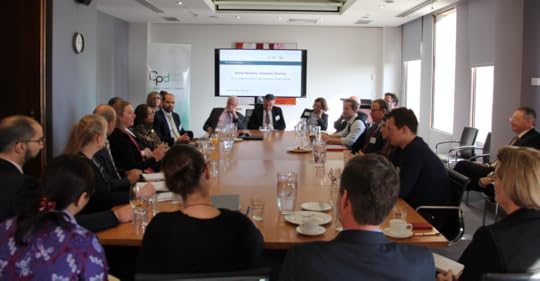
On 22 June 2018 CPD and ANU again hosted leaders from government, business, civil society and academia to discuss important matters relating to Australia’s economy, this time how Australia’s trade policies can adapt to the reality of climate change.
This event was hosted by ANU Chancellor and former Foreign Minister, the Hon Gareth Evans AC QC and was moderated by Bob McMullan, the former Minister for Trade and Adjunct Professor at the ANU Crawford School. Our two experienced speakers on this occasion were:
Craig Emerson (former Australian Minister for Trade and Competitiveness, Minister for Tertiary Education, Skills, Science and Research, and Minister Assisting the Prime Minister on Asian Century Policy)
Caroline Lambert (European Union’s Climate and Environment Counsellor in Australia; former adviser to European Commissioner for Climate Action, Connie Hedegaard)
Craig Emerson opened discussion with the history of global efforts to confront climate change, describing the process from the Kyoto Protocol, through the failed Copenhagen Conference to the recent Paris Agreement. Along the way he discussed at length the problem of ensuring compliance amongst nations with differing economic interests and levels of development, while also discussing how the lack of firm policy action from Australian governments over recent years has left the field open to business as the private sphere attempts to prepare for a future marked by environmental insecurity, strategic risks and changing consumer demands.
Caroline Lambert then spoke with extensive experience on the steps that the EU and its constituent countries have taken to adjust their trade regimes for our climate future, in particular how it can come into play with the negotiation of free trade agreements and how this may play out in upcoming EU-Australia trade negotiations. Caroline also covered some recent policy developments in the EU, including sustainable finance, the circular economy and ETS legislation.
Much of the following group discussion focused on the role that business can play in filling the policy vacuum left by government inactivity on the issue of climate change, as well as consequences for Australia in terms of trade and transition from our nation’s apparent determination to simply react to changes that occur on the global stage, rather than taking a leaf from Europe’s book in attempting to shape and lead those changes.
The opening remarks were followed by a wide-ranging discussion with a diverse and expert audience. Participants included: Arjuna Dibley (JSD candidate, Stanford University), Bob McMullan (Adjunct Professor, Crawford School of Public Policy, Brad Kerin (General Manager & Company Secretary, Carbon Market Institute), Caroline Lambert (European Union’s Climate and Environment Counsellor in Australia), Craig Emerson (Former Member of the Australian Parliament and Cabinet Minister), Dan Cass (Strategist, The Australia Institute), Emily Gerrard (Director, Comhar Group), Gareth Evans (Chancellor, Australian National University), Gavan McFadzean (Director of campaigns and communications, The Greens), Hannah Neep (Consultant, McKinsey & Company), Jack Halligan (Consultant, McKinsey & Company), Jeanine Hourani (Consulting Analyst, Dandolopartners), Marian Schoen (Executive Director, University of Melbourne EU Centre on Shared Complex Challenges), Mark Lawrence (Managing Director, Mark Lawrence Group), Matt Wenham (Executive Director, Policy, Australian Academy of Technology and Engineering), Megan Flynn (Group Manager – Environment and Carbon Strategy, Qantas), Orchida Sekarratri (Vice-Consul, Consulate-General of the Republic of Indonesia), Paul Sinclair (Director of Campaigns, Australian Conservation Foundation), Peter Castellas (CEO, Carbon Market Institute), Rosemary Bissett (Head of Sustainability Governance & Risk, NAB), Sarah Barker (Special Counsel, MinterEllison), Simon Bradshaw (Climate Change Specialist, Oxfam Australia), Spica A. Tutuhatunewa (Consul-General, Consulate-General of the Republic of Indonesia), Stephanie Ziersch (Director Communities & Climate Change, Sustainability Victoria), Steven Skala (Chair, Clean Energy Finance Corporation), Travers McLeo (CEO, Centre for Policy Development).
The discussion also touched on:
The failure of Australia’s governments to align their action on climate change with regional strategic interests
A lack of assessment of risk and opportunities arising regionally from climate change abatement efforts
Export and emission targets of developing countries
The importance of turning Australia’s notion of adapting and reacting to global policies into shaping them
CPD would like to thank Gareth Evans and the team at ANU House for hosting the event, and all the participants who contributed to another engaging ANU-CPD Policy Dialogue.
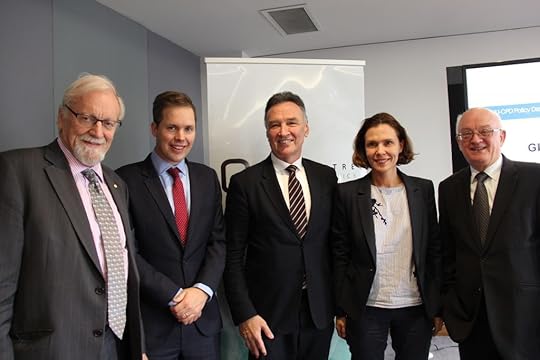
The post Trade and Climate Change | ANU-CPD POLICY DIALOGUE | June 2018 appeared first on Centre for Policy Development.
June 17, 2018
Climate Horizons | REPORT AND PUBLIC EVENT | June 2018

Today CPD releases its latest report on how Australian companies, investors and policymakers can manage climate risks and support a transition to a zero carbon economy.
Climate Horizons: Scenarios and Strategies for Managing Climate Risk was written by Sam Hurley and Kate Mackenzie and features input from ClimateWorks Australia. It builds on a 2017 discussion paper which set out five essential principles for high-quality climate risk analysis by Australian firms and investors.
The report shows that, a year on from the TCFD’s landmark report on how businesses should disclose climate change risks, more Australian companies are considering what the climate change and the Paris Agreement mean for their strategies and investments.
However, serious deficiencies remain in the quality and consistency of climate-related disclosures – especially on the TCFD’s landmark recommendation that companies conduct scenario analysis to test their resilience in a well-below-2-degree world.
Many scenario exercises to date have used conservative assumptions, overlooked physical impacts of climate change, and failed to disclose impacts on corporate decisions and strategy.
Companies and investors that overlook or misjudge crucial climate impacts and transitions risk major long-term losses and lost opportunities. More rigorous and ambitious scenario analysis can strengthen business plans and support investments and strategies to drive a low-carbon transition.
Key recommendations:
Climate Horizons offers a resource for those developing and interpreting scenario analysis in the business community. It also provides updated recommendations on next steps that Australia’s financial regulators can take to support better climate-related risk disclosure and management – building on crucial progress since the beginning of 2017. The report calls for:
– New guidance on climate risks by ASIC, the RBA and other regulators to support momentum for better disclosure of climate-related risks by Australian companies and investors.
– Close monitoring of climate-related financial disclosures over the next 12 months to assess the case for more demanding mandatory reporting requirements.
– A systematic review of sustainable finance in Australia, drawing on an emerging global policy agenda that connects green finance with a wider range of sustainability-related challenges and opportunities.
Key documents
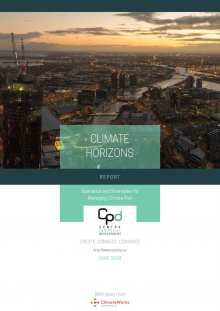
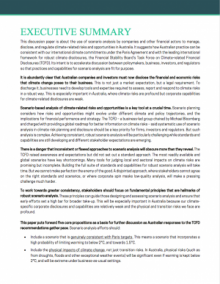
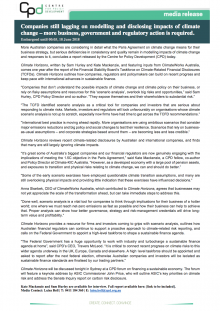
Full report
Executive summary
Media release
[image error]
The climate risk reporting journey: A corporate governance primer
Climate Horizons builds on CPD’s influential research and policy development on climate-related risks since 2016. This included the landmark legal opinion by Noel Hutley SC and Sebastian Hartford-Davis on company directors’ duties to consider and disclose climate-related risks. MinterEllison’s Sarah Barker, who was the instructing solicitor on the Hutley opinion, has provided a primer on climate risks for company directors to accompany the report: see The climate risk reporting journey: A corporate governance primer.
Climate Horizons will be discussed tonight at a CPD public forum in Sydney on financing a sustainable economy. This event will feature a keynote address by ASIC Commissioner John Price on ASIC’s views and priorities on climate-related risks. This follows a similar CPD forum in November 2017, when APRA’s Geoff Summerhayes provided the influential speech “The weight of money: a business case for climate risk resilience.”
https://cpd.org.au/wp-content/uploads/2018/06/TCFD-BoE-Conference-on-Climate-Scenarios-What-are-scenarios_.mp4
Media coverage of Climate Horizons research
Australian shareholders should be told of climate risks to profits, says think tank, Gareth Hutchens, The Guardian, 29 November 2017
Key links and related reading
Climate Horizons: next steps for scenario analysis in Australia, CPD discussion paper, Sam Hurley and Kate Mackenzie, November 2017
Carbon risk: a burning issue, Senate Economics References Committee report, April 2017
Report of the Financial Stability Board’s Taskforce on Climate-Related Financial Disclosures (TCFDs), June 2017.
Carbon risk: a burning issue, Senate Economics References Committee report, April 2017
Australia’s new horizon: Climate change challenges and prudential risk, Geoff Summerhayes, February 2017
CPD roundtable on directors duties, climate risks and sustainability, October 2016
Legal opinion on directors duties and climate change, Noel Hutley SC and Sebastian Hartford-Davis, October 2016
The post Climate Horizons | REPORT AND PUBLIC EVENT | June 2018 appeared first on Centre for Policy Development.
June 14, 2018
Climate Horizons | REPORT AND PUBLIC EVENT | June 2018

More Australian companies are considering in detail what the Paris Agreement on climate change means for their business strategy, but serious deficiencies in consistency and quality remain in modelling impacts of climate change and responses to it, concludes CPD’s latest research released today on 18 June 2018.
Climate Horizons, written by Sam Hurley and Kate Mackenzie, and featuring inputs from ClimateWorks Australia, comes twelve months after the report of the Financial Stability Board’s Taskforce on Climate-Related Financial Disclosures (TCFDs) was handed down. It outlines how companies, regulators and policymakers can build on recent progress and catch up to the sustainable finance agenda abroad.
Key recommendations:
– New guidance on climate risks by ASIC, the RBA and other regulators to support momentum for better disclosure of climate-related risks by Australian companies and investors.
– Close monitoring of climate-related financial disclosures over the next 12 months to assess the case for more demanding mandatory reporting requirements.
– A systematic review of sustainable finance in Australia drawing on an emerging global policy agenda that connects green finance with a wider range of sustainability-related challenges and opportunities.
https://cpd.org.au/wp-content/uploads/2018/06/TCFD-BoE-Conference-on-Climate-Scenarios-What-are-scenarios_.mp4
Climate Horizons will be discussed tonight in Sydney at a CPD forum on financing a sustainable economy, which will feature a keynote address by ASIC Commissioner John Price.
Key documents


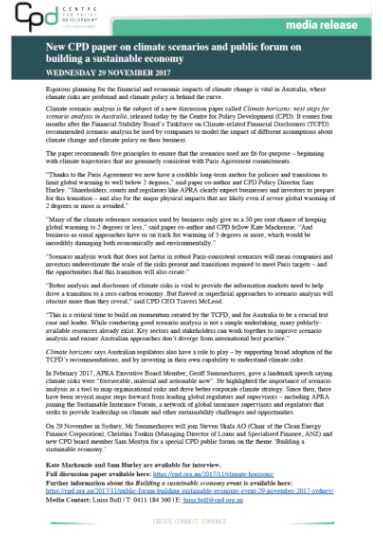
Full report
Executive summary
Media release
Media coverage
Companies still lagging on modelling and disclosing impacts of climate change, Alice Uribe, Australian Financial Review, 18 June 2018.
Companies still lagging on modelling and disclosing impacts of climate change – more government and regulatory action is required, Lisa Cox, The Guardian, 18 June 2018.
Australia outpaced by sustainable finance agenda, Travers McLeod, The Guardian, 18 June 2018.
Australian shareholders should be told of climate risks to profits, says think tank, Gareth Hutchens, The Guardian, 29 November 2017
Key links and related reading
Final report of the Senate Inquiry into the implications of climate change for Australia’s national security, 17 May 2018.
Report of the Financial Stability Board’s Taskforce on Climate-Related Financial Disclosures (TCFDs), June 2017.
Task Force on Climate-related Financial Disclosures Public Consultation Summary, April 2017.
Australia’s new horizon: Climate change challenges and prudential risk, Geoff Summerhayes, February 2017
Australia’s new horizon: Climate change challenges and prudential risk, John Price, June 2018
CPD roundtable on directors duties, climate risks and sustainability, October 2016
Legal opinion on directors duties and climate change, Noel Hutley SC and Sebastian Hartford-Davis, October 2016
CPD submission to the Inquiry into the Implications of climate change for Australia’s national security, August 2017.
Australia’s top companies ignore climate change, and we let them, Julien Vincent, The Sydney Morning Herald, 10 December 2017
Australian shareholders should be told of climate risks to profits, says think tank, Gareth Hutchens, The Guardian, 29 November 2017
Carbon risk: a burning issue, Senate Economics References Committee report, April 2017
Final Recommendations Report, Task Force on Climate-related Financial Disclosures, June 2017
CPD Submission to the Senate Foreign Affairs, Defence and Trade References Committee Inquiry into the United Nations Sustainable Development Goals, Sam Hurley, April 2018.
The post Climate Horizons | REPORT AND PUBLIC EVENT | June 2018 appeared first on Centre for Policy Development.
June 11, 2018
Time to judge our wars in Iraq and Afghanistan
Published in The Sydney Morning Herald on 11 June 2018.
“We will never forget that 100 years ago a young and brave nation on the other side of the world made history by writing our history. Lest we forget.”
So ended French Prime Minister Edouard Philippe’s tribute to the Anzacs in April this year at the opening of the Sir John Monash Centre at Villers-Bretonneux.
Compare this to what a former Afghan refugee who calls Australia home wrote after Fairfax Media reported our special forces may have committed war crimes in Afghanistan.
[image error]The Somme Villers-Bretonneux Australian National War Memorial.Photo: Alamy
“Disgraceful crimes committed by the elite forces of our civilian government,” he began. “We need to rethink about how we train these guys and instil the morals that we as a nation would condone.”
There are many reasons to be alarmed at the incidents Nick McKenzie and Chris Masters described in these pages over the past few days. For one, they suggest a fog of law in Australia’s longest war.
Retired US colonel Marc Warren was the top US military lawyer in Iraq from 2003-04, a period that included the Abu Ghraib scandal. In 2010, he wrote about the “fog of law” that persisted then – “the ambiguity caused in wartime by the failure to clearly identify and follow established legal principles”. The lesson Warren drew was that “legal ambiguity at the strategic level can imperil mission success”.
When I met with Warren in 2011, he criticised clashing standards and interpretations of legal principles across operations, including for special forces and the CIA.
“When you overlay different standards and policies,” he said, “soldiers will gravitate toward whatever standards and policies are perceived in their minds to be best for them. Sometimes best can be easiest. Sometimes best can be the most effective. You can wind up with a lack of discipline and a lack of cohesive command and control.”
The allegations uncovered resemble the situation Warren described. What’s worse, the fog of law appears to have been exacerbated by a “fog of strategy”. Former special forces captain and now Liberal MP Andrew Hastie said soldiers were “grasping for operational clarity in a fog of strategic uncertainty”.
If alleged breaches of the law of armed conflict by Australian forces are substantiated, it would reveal a disturbing shift towards a more aggressive culture among elements of the ADF.
In the early stages of the Iraq and Afghanistan wars, non-US forces were viewed as more cautious, less likely to conclude that facts justified the use of force or detention. Australian troops were lauded for their valour and integrity. Last year, US Defence Secretary James Mattis said this about the Australian military leaders he worked with as head of US Central Command, which oversees both wars: “You have a degree of moral and ethical reputation that I think could help ensure that in the future more sustainable decisions are made, including by the Americans.”
Much has been written about the strategic shift in the US-led campaigns from a kill and capture mentality to one focused on eliminating excessive force and winning local support. No one personified this change more than General Stanley McChrystal. After he assumed command of US and ISAF forces in Afghanistan in 2009, McChrystal issued a tactical directive to all troops. His restraints on the use of force and detention caused frustration among senior officers, especially in the special forces community, which McChrystal had commanded from 2003-08.
In 2011, McChrystal told me he “agonised” over the wording because he wanted to make sure the forces would “know it was me”.
“I did not want people to be able to live in the legal circle outside the moral circle,” McChrystal said. “To get in the bullseye you had to be in the operational circle, which is well nested in the others.”
McChrystal was prepared to listen to senior officers who thought restrictions on the use of force went too far, but made it clear “this isn’t a debate, this is what you are going to do”. The use of force had “to be precise, clearly legitimate”.
“Following this intent”, McChrystal wrote, “requires a cultural shift within our forces.”
The thrust of McChrystal’s directive was continued by General David Petraeus in 2010 and General John Allen in November 2011, who pledged to “eliminate” civilian casualties.
The alleged violations of the law of armed conflict detailed by McKenzie and Masters raise serious questions about whether some Australian forces met the standards of leadership and ethics expected, whether they “lived their values”, and whether they “reduced the loss of innocent civilian life to an absolute minimum”.
In a war fought among civilians and often at ground level, there was inevitable variance between commanders, especially in assessing “hostile intent”. That judgment was critical in determining whether an individual was a civilian or an insurgent directly participating in hostilities and therefore capable of being killed or captured. It also influenced the actions a soldier could take in self-defence.
Truth be told, the perpetual state of war in Afghanistan created a dangerous legal environment where it could be easier to kill than to capture. “But now instead of capture, detention, and interrogation,” former CIA director Michael Hayden wrote in 2016, “we simply default to the kill switch to take terrorists off the battlefield.”
Whether directives like McChrystal’s meant soldiers assumed too much risk was a constant source of tension. One US officer told me a saying used by some soldiers to capture the dilemma they faced: “Better to be judged by 12 than carried by six.”
But there was a clear shift away from “kill counts”. One experienced major who deployed to Kunar province in 2009-10 told me they “were in firefights everyday” but “did not even pay attention to body counts”. In his mind, “A soldier pulling a trigger nowadays, it could change that entire village’s perception of what we are trying to do if you kill the wrong person.”
One of his platoon leaders said: “All it takes is one bad firefight or one bad unit or one misstep to happen over there and then you can wipe years of work away.”
The authorised account of the Australian Army in Afghanistan reveals that, in 2001, there was no indication this would be Australia’s longest war. If legal and strategic constraints became foggy over time, we must find out why.
[image error]Angus Campbell, who is soon to become Defence Force chief.Photo: Alex Ellinghausen, digitally altered
One casualty of legal and strategic drift is culture. Our next chief of the Defence Force, General Angus Campbell, was asked about this last August. He said he knew “the stress and the demand we have placed on our special forces community” and that “stress necessarily is something that can affect culture”. Months later, in London, he said “culture eats strategy for breakfast, every time”.
The ADF is one of our most trusted and venerated institutions. The conduct of the Anzacs echoes through history and has bent its arc towards justice. To preserve that trust, it must be shown that our military forces and their commanders are bound by, and accountable to, the laws they seek to defend.
This isn’t just Campbell’s responsibility. We share collective responsibility as a country for the wars fought in our name, and especially for the wellbeing of all our veterans, young and old, who face a growing toll of post-traumatic stress disorder after nearly two decades in war zones.
For too long, the Iraq and Afghanistan campaigns have risked becoming Australia’s forgotten wars. Surely the time has come to adjudicate their successes and failures, along with the diplomatic, military and legal lessons we should draw from them.
Travers McLeod is chief executive of the Centre for Policy Development and the author of Rule of Law in War: International Law and United States Counterinsurgency in Iraq and Afghanistan (Oxford University Press, 2015).
The post Time to judge our wars in Iraq and Afghanistan appeared first on Centre for Policy Development.
May 29, 2018
Double your impact!
The post Double your impact! appeared first on Centre for Policy Development.
Seeking Your Support
The post Seeking Your Support appeared first on Centre for Policy Development.
Centre for Policy Development's Blog
- Centre for Policy Development's profile
- 1 follower



